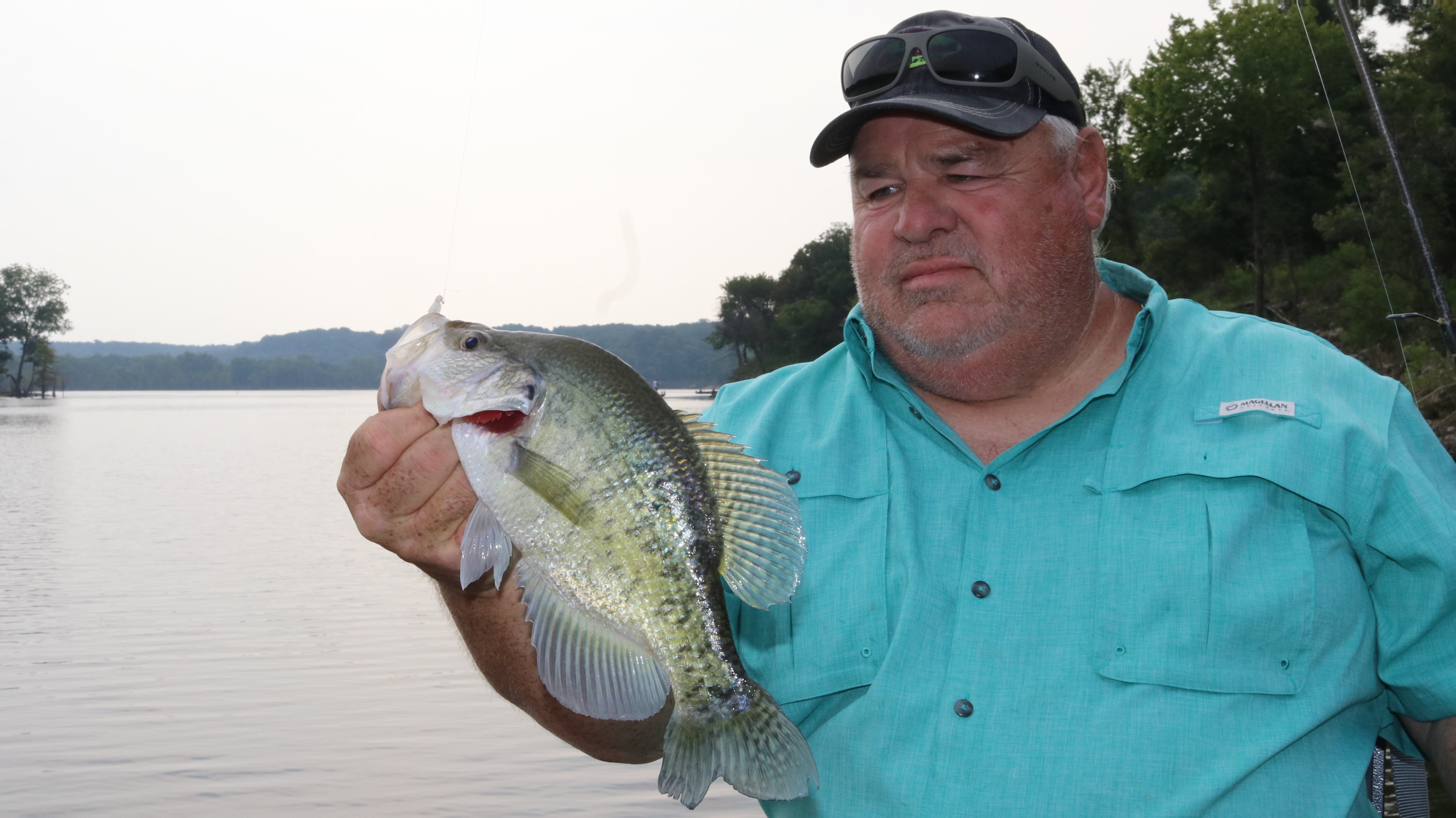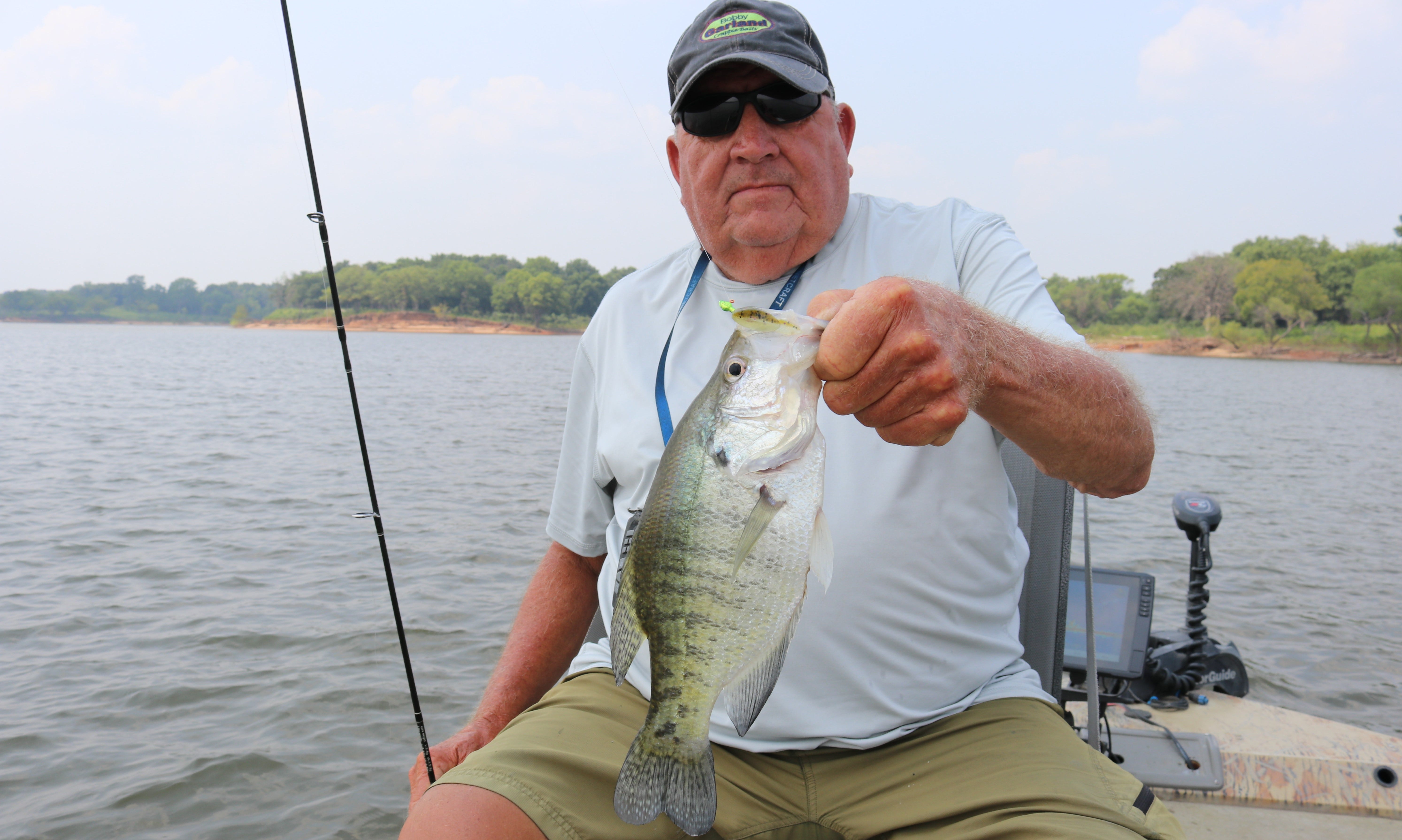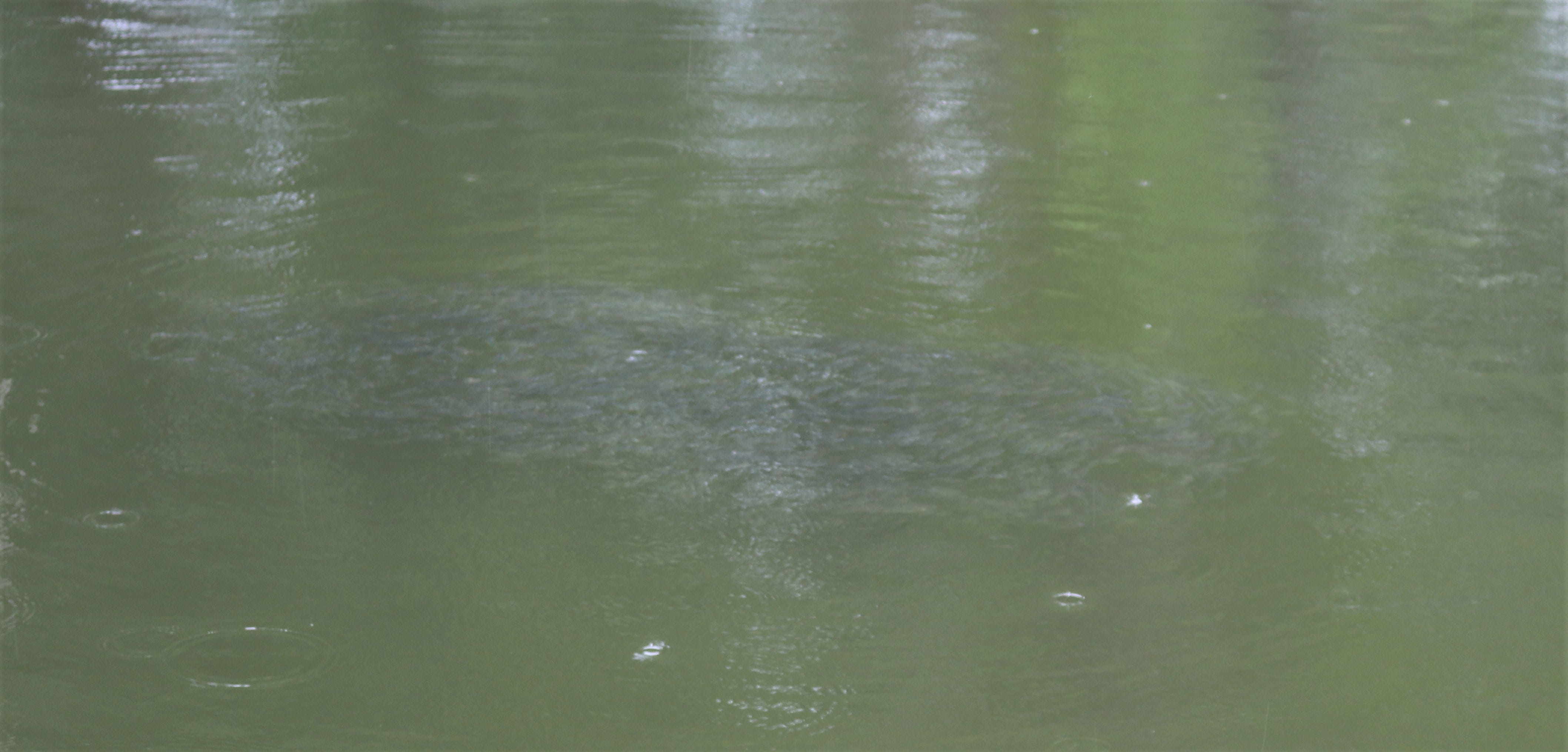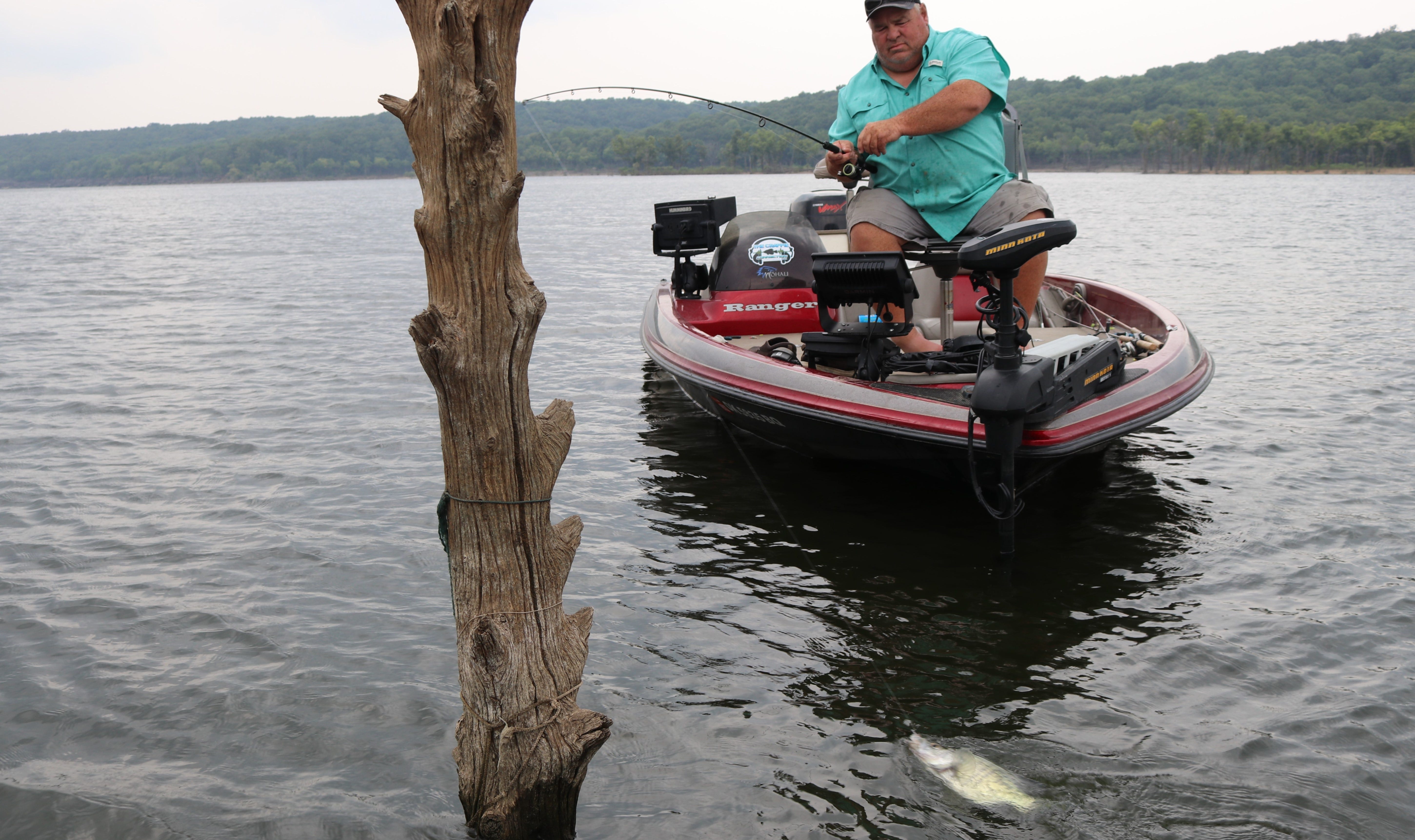- Aug 16, 2021
Match the Hatch to Catch More Crappie
Paying attention to prevalent forage and selecting bait styles and colors to match findings can yield big dividends when you are crappie fishing.
“Itty Bit?” Gary Dollahon asked, with a tone that suggested he already knew the answer.
“Of course,” I replied.
Dollahon, who is brand manager for Bobby Garland Crappie Baits, had put us on some bridge crappie at Oklahoma’s Lake Eufaula, and an Itty Bit Slab Hunt’R was carrying the crappie-catching load for me. I was fishing a tandem rig, with a regular sized Baby Shad Swim’R in front and an Itty Bit trailing, and virtually every fish was hitting the diminutive offering. I didn’t count, but I’m guessing I caught 25 of 30 crappie during a couple of hours of bridge fishing, and all except one were on the Itty Bit Slab Hunt’R.
We saw schools of tiny minnows around every bridge pillar and around other cover throughout that day, so while I can’t get inside the fish’s heads, it makes sense that the 1 ¼-inch bait had greater appeal because it more accurately matched the forage fish the crappie had been eating.
Trout fishermen, especially fly fishermen, continually consider “matching hatches.” A hatch, in fly lingo, refers to aquatic insects reaching adult stage and coming to the surface before flying, but “match the hatch” is used more broadly for matching prevalent forage, whether that means aquatic insect nymphs, adult insects drifting on the water, sculpins, crawfish or something else. It has since been extended to all kinds of fishing but is a concept too frequently overlooked by crappie anglers, who tend to fish almost exclusively either with minnows or with whatever 2-inch jig seems to have the right action to prompt strikes.
Crappie bait selection shouldn’t be all about matching hatches. Often you need a bulky bait, one with a thumping tail action or one with extra subtle movements, based on a technique, water conditions or the mood of the fish. That said, it’s always prudent to at least consider prevalent forage and what sizes shapes and colors would best “match the hatch” and might entice more strikes.
Not Too Small


“People see the Itty Bits and think they’ll only catch small fish,” said Oklahoma crappie angler Gary Rowe. “That’s just not true. I catch just as many big crappie with Itty Bits as with bigger baits. The difference is that I catch a lot more fish when they want something smaller.”
Rowe is a big fan of Itty Bits and sometimes uses all three baits in the series (Itty Bit Swim’R, Itty Bit Slab Slay’R, Itty Bit Slab Hunt’R). He especially likes the new Itty Bit Slab Hunt’R if the fish are relating to young-of-the year shad or small minnows. He likes the other models when Mayflies and other aquatic insects are hatching and providing important forage for the crappie.
Rowe typically uses one of two rigs for fishing Itty Bit baits. If he isn’t working in much in brush or other snaggy cover, he likes to fish a tandem rig, rigging a traditional sized Bobby Garland crappie bait on 1/16- 1/24 Crappie Pro Mo’ Glo Jighead in front and an Itty Bit bait on 1/48- or 1/64-ounce Itty Bit Jighead in the back. If the cover is too grabby for two jigs, he’ll fish the Itty Bit with a split shot 12 to 18 inches above it on the line.
Whether via a front jig or split shot, the added weight allows for more accurate pitching and gives Rowe better control for getting his Itty Bit down in the water column and to the fish. The front weight is always heavier than the Itty Bit Jighead in the back, so it sinks faster as the rig falls toward the fish. When Rowe sees his rig approaching fish on his electronics, he tightens the line. That stops the fall of the front jig or weight, but the Itty Bit pendulums slowly in front of the fish, which often trigger strikes.
Rowe uses Garmin LiveScope to find cover and crappie and pitches to specific fish or groups of fish. Because of the detailed screen image, he usually can see both jigs or the weight and jig falling as separate marks. That means he can witness how frequently the fish react initially to his larger offering by moving closer and then attack the smaller hatch-matching Itty Bit as soon as it begins its slower final fall.
Shad Match


Leon Mears also makes heavy use of Itty Bits, especially when the crappie are eating small minnows or when a Mayfly hatch has them relating to aquatic insects and he wants to deliver an extra small profile. He has enjoyed regular success with the Itty Bit Slab Slay’R and Itty Bit Swim’R and is delighted to now have the Itty Bit Slab Hunt’R available. The original Slab Hunt’R, which has the same minnow shape and action in a larger size, is one of Mears’ favorite full-sized crappie baits.
When Mears wants to match young shad during late summer and early fall, though, his go-to bait is a Bobby Garland Crappie Shooter.
Mears doesn’t shoot docks. Like Rowe, he likes to search out fish with LiveScope and pitch to them. He’d be quick to tell you the Crappie Shooter isn’t only for shooting. He likes this bait’s shad-like appearance and small size for matching hatches. He also likes its slow, undulating fall, which comes as the result of it being flat on the top and bottom and is part of what makes it work so well for shooting docks.
“You can see the difference in the way it falls, watching it on LiveScope. The crappie can’t resist it,” Mears said.
Mears showed me both of those things when he and I fished together. I saw how the Crappie Shooter looked different than other baits on the screen, with a slow fall that was much less straight. More importantly, I saw how effective it was prompting strikes from crappie that were relating to small shad.
Don’t Just Downsize


Although our focus to this point has been on smaller baits (and baitfish often are small late in the summer) this isn’t only about down-sizing. The idea is to seek to match the appearance of prevalent forage, whether that means matching tiny Mayflies or 2 ½-inch blueback herring, and applications vary by waterway and season.
Fly fishermen typically prioritize matching size first, profile second and color third. Bait size can be important, whether that means downsizing or upsizing.
Matching the hatch begins with peering into the water when you see schools of bait, paying attention to what fish spit up and watching the surface, the shore and cover near the water for cases from hatched aquatic insects, small crawfish claws other clues. It also calls for learning about the forage in a lake, including roaming baitfish like shad and herring and minnow-type baitfish species that typically inhabit shallow areas.
Considering food that’s likely to be in the types of areas you are fishing and seeking evidence to confirm and provide more details about sizes and colors gives you the information needed to make the best decisions about baits.
A Bobby Garland Baby Shad, as the name suggests, is an outstanding imitator of a young shad. It is 2 inches long, but with its narrow tail, it is a “small 2 inches.” A 2 ¼-inch Slab Hunter is exceptional for matching a larger minnow or a herring. A Pile Diver offers a good imitation of a small crawfish.
Forage Intel Sources
- State Fisheries Departments – Many fisheries department websites have lake/river profile pages, which often include helpful information about forage in waterways. Fishing reports on the same sites sometimes offer additional clues.
- Fishing Forums – Discussions about lakes and current patterns commonly reference prevalent forage species. Don’t just look at crappie pages, either. Discussions about patterns for bass, walleyes or various panfish often include helpful forage information that can be applied to crappie fishing.
- Bait Shops & Boat Ramp – Don’t forget the old fashion method of simply making conversation with people and asking question. Many anglers are happy to share what they know, especially when you’re not asking about specific spots!





